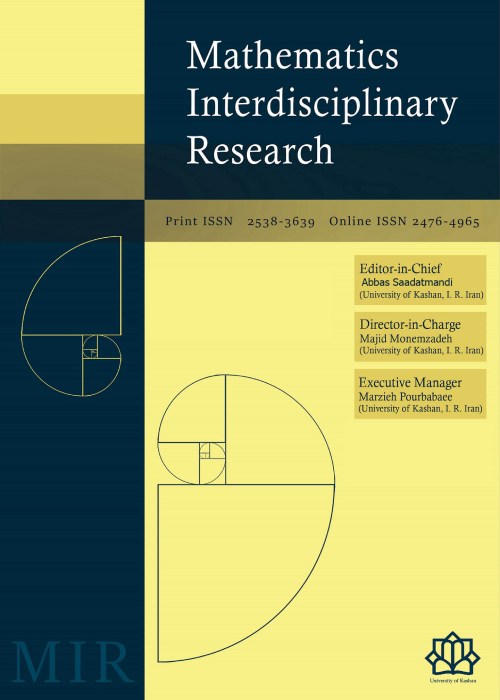فهرست مطالب
Mathematics Interdisciplinary Research
Volume:6 Issue: 4, Autumn 2021
- تاریخ انتشار: 1401/03/18
- تعداد عناوین: 6
-
-
Pages 243-256In the present work the oscillatory behavior of the solutions of a nonlinear generalization of Euler equation will be considered in which the nonlinearities satisfy the smoothness conditions which guarantee the uniqueness of solutions of initial value problems. However, no conditions of sub(super)linearity are assumed. Some new sufficient conditions are established ensuring oscillation of all solutions of this equation. Examples are also provided to illustrate the relevance of the main results.Keywords: Oscillation, Lienard system, Euler Equations
-
Pages 257-273A general hyperring is an algebraic hypercompositional system (R,+,·) with two hyperoperations ”+" and ” · ”, such that for all x,y ∈ R, x + y and x · y are non-empty subsets of R, and R satisfies the axioms similar to a ring. We introduce and study hyperideals of a general hyperring. In this regards, we construct a connection between classical rings and general hyperrings, specifically, we extend a ring to a general hyperring in nontrivial way. Moreover, a way to construct a general hyperring from set are given. Also, we concentrate on an important class of general hyperrings, which is called Krasner hyperrings, and discuss on their hyperideals. Finally, the set of all hyperideals of a finite general (resp. Krasner) hyperring are considered and its hyperideals are investigated.Keywords: General hyperring, Hyperideals, Krasner hyperring
-
Pages 275-291
In this paper, we will introduce an algorithm for obtaining integrals of the form ∫x0 tm φ(t)dt, m ∈ N ∪ {0}, where φ is the scaling functions of Daubechies wavelet. In order to obtain these integrals in dyadic points for x’s, we have to solve a linear system. We will investigate, sparseness, well-conditioning and strictly diagonal dominant of matrices of these systems.
Keywords: Daubechies wavelets, Scaling functions, Dyadic points, Diagonal dominant, Well-condition -
Pages 293-307In this paper, a combinatorial elliptic-circular waveguide is introduced to amplify electromagnetic waves. The cross-section of this waveguide is elliptic and filled by a dielectric material, whereas two axial circular hollows have been created in it. One of the hollows has been filled by an unmagnetized cold plasma and a relativistic pencil electron beam(RPEB) is injected inside other hollow. By applying an adaptive finite element method(FEM), electromagnetic slow waves amplification in the waveguide is investigated. We study variations of growth rate of excited microwaves under influence of different factors. The purpose of investigating the effect of various parameters of this waveguide such as plasma and electron beam radiuses, the RPEB location, dielectric constant and beam current intensity; is to introduce the waveguide with optimal configuration and parameters to obtain the highest wave growth rate.Keywords: Combinatorial dielectric-plasma waveguide, Relativistic pencil electron beam, Time growth rate, Finite element method
-
Pages 309-317For a finite group G, the probability of two elements of G that commute is the commutativity degree of G denoted by P(G). As a matter of fact, if C = {(a; b) ∈ G×G | ab = ba}, then P(G) = |C|/|G|2 . In this paper, we are going to find few formulas for P(G) independent of |C|; for some AC-groups, and also in some special cases of finite minimal non-abelian groups. Moreover, the study will present implications for certain qualified finite groups.Keywords: AC-group, Commutativity degree, Minimal non-abelian group
-
Pages 319-327In this paper, we study the existence of the following optimal solution for the system of differential inclusiony′ ∈ Φ(t,y(t)) a.e. t ∈ I = [t0,b] and y(t0) = u2,y′ ∈ Ψ(t,y(t)) a.e. t ∈ I = [t0,b] and y(t0) = u1.in a Hilbert space, where Φ and Ψ are multivalued maps. Our existence result is obtained via selection technique and the best proximity point methods reducing the problem to a differential inclusion.Keywords: Differential inclusion, Best proximity point, Selection theorem


